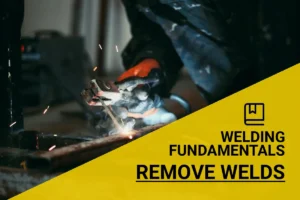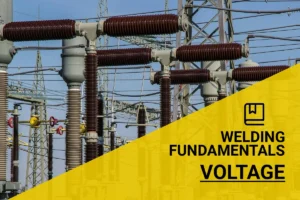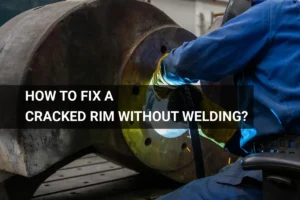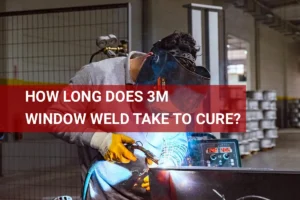How to Weld a Gas Tank? Essential Steps, Safety Tips, and Methods
Published on: June 13, 2025 | Last modified: March 4, 2025
By: Joe Carter
A gas tank is a container that holds fuel for vehicles or machines. It keeps the fuel secure and prevents leaks, ensuring optimal performance.
A question that keeps coming up is how to weld a gas tank. It’s crucial to understand the risks involved because improper techniques can lead to explosions or leaks. From my experience, I’ve seen projects go dangerously wrong when safety wasn’t prioritized, so taking the right steps is key.
In this guide on how to weld a gas tank, you will learn about types of gas tanks and their weldability, prerequisites for welding, essential steps for welding, safety tips, and the various welding methods available. We’ll also cover factors affecting gas tank welding, common issues that may arise, aftercare and inspection, as well as the benefits of proper welding. Plus, we’ll discuss real-world applications and alternative repair options for old welding tanks.
Contents
- How to Weld A Gas Tank?
- What is a Gas Tank?
- Types Of Gas Tanks and Their Weldability
- Prerequisites: What Do You Need?
- Safety Tips
- Steps for Welding a Gas Tank
- Types Of Welding Methods for Gas Tanks
- Factors Affecting the Welding Of a Gas Tank
- What Could Go Wrong: Common Issues
- Aftercare, Inspection, and Advanced Tips for Welding a Gas Tank
- Advanced Techniques for Welding a Gas Tank
- Comparison of Welding Techniques
- Key Benefits Of Properly Welding a Gas Tank
- Real-world Uses for Welded Gas Tanks
- Other Options for Repairing a Gas Tank
- Frequently Asked Questions (FAQs)
- Conclusion
- References
How to Weld A Gas Tank?
A gas tank stores fuel for vehicles. To weld a gas tank, drain it completely, clean thoroughly, and use TIG welding with welding rods at 6061 aluminum. This task is tricky and best for skilled welders.
What is a Gas Tank?
A gas tank is a container that holds gasoline or other fuels for vehicles. It’s usually made of metal, like steel or aluminum, with a capacity ranging from 50 to 80 liters (13 to 21 Gallons). The tank must withstand various pressures and temperatures, so it needs to be durable and resistant to corrosion. Modern gas tanks can endure pressures up to 3.4 bar (50 Psi) under certain conditions.
Now, let’s discuss how to weld a gas tank. Welding this type of tank presents challenges since it contains flammable liquids. Whenever I’ve welded a gas tank, I prepped it meticulously to avoid accidents, ensuring it’s entirely empty and free of vapors. That’s crucial!
A friend used it for a motorcycle restoration project. He learned how to weld a gas tank safely, which was vital in fixing a small leak. He always says pre-welding preparation is key, especially knowing how to prep a gas tank for welding to ensure safety and effectiveness. Plus, using proper techniques can prevent potential dangers later on.
Types Of Gas Tanks and Their Weldability
What are the types of gas tanks and how do they weld?
Plastic Gas Tanks
Made from high-density polyethylene (HDPE), these can’t be welded in the traditional sense. Instead, use specialized plastic welding techniques. To weld, heat the edges with a plastic welder, then apply a filler rod to bond them.
Metal Gas Tanks
Usually made of steel, they can be welded with the right tools. Use MIG (Metal Inert Gas) welding for the best results. To weld, remove any rust or paint, ensure it’s empty and filled with inert gas, then set up your MIG welder to join the seams. If you are curious about the welding techniques for alloy wheels, this resource on how many times you can weld an alloy wheel provides detailed information.
Fiberglass Gas Tanks
These durable tanks are tricky to repair. They don’t use traditional welding; instead, you’ll use resin and fiberglass. To bond, clean the surface, mix resin with hardener, and apply it where needed.
Polyethylene Gas Tanks
Lightweight and chemical-resistant, these are welded using specific techniques. To weld, use hot air welding or a heat gun to fuse the edges together.
Aluminum Gas Tanks
This strong material is common in racing. TIG (Tungsten Inert Gas) welding is preferred. To weld, clean the area with a stainless steel brush, use a TIG welder, and ensure proper argon gas shielding for a clean weld. The choice of electrode significantly impacts performance, as illustrated by the electrode classification E316-16.
So far we covered the different types of gas tanks and their compatibility with welding. Next, let’s look at the necessary prerequisites.
Prerequisites: What Do You Need?
What do you need to start welding a gas tank?
- MIG Welder: You’ll need a reliable MIG welder, such as the Hobart Handler 140. It provides excellent control and power for welding thin materials like gas tanks.
- Argon Gas Cylinder: Get a high-quality argon cylinder, like the Smith Gas 125, which has a size of 125 cu ft (3,540 L). This ensures good weld penetration and reduces oxidation.
- Welding Rods: You’ll need ER70S-6 rods for welding. They’re designed for steel fabrication, which is essential for a strong gas tank weld.
- Welding Cart: A sturdy cart, like the WeldPak 215 Cart, is necessary. It keeps your equipment organized and mobile in your workspace.
You should now have a good understanding of the necessary requirements and tools. In the next part, we’ll discuss safety precautions.
Safety Tips
Let’s cover essential precautions for gas tank welding.
- Ventilation: Ensure good airflow to prevent gas buildup. Use fans like the Stanley Pro-Stationary Fan (Model 655704) for best results.
- Fire Extinguisher: Keep a Class B fire extinguisher nearby for emergencies. Models like the Amerex B402 are excellent for welding tasks.
- Shielding: Use welding blankets to protect flammable materials. This is crucial. Products like Steiner 21862 blankets work well.
- Personal Protective Equipment: Always wear flame-resistant gloves and clothing. I recommend the Lincoln Electric Welding Helmet for eye protection and comfort.
Staying safe is a top priority—let’s keep it personal and smart!
So far we covered safety precautions. Next, let’s look at the procedure for welding a gas tank.
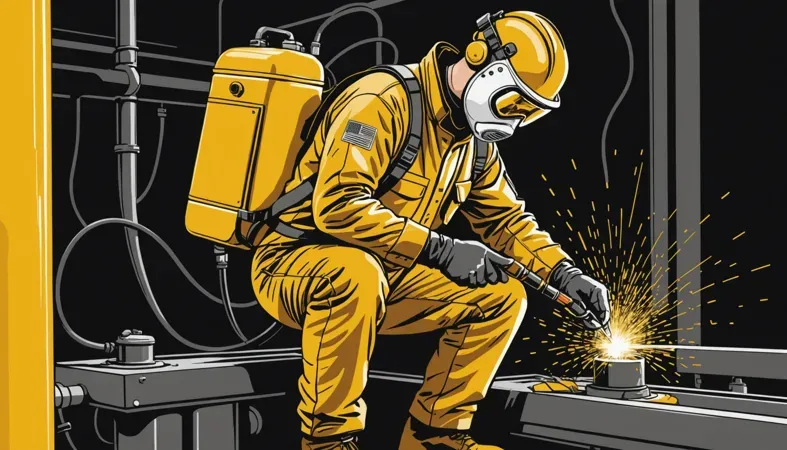
Steps for Welding a Gas Tank
Here are the steps to effectively weld a gas tank. Follow each step closely for a successful job!
Prepare the Work Area
Clear your workspace to avoid fires or accidents. Ensure the area has good ventilation, as welding fumes can be hazardous. Using a welding blanket offers protection against stray sparks, and it’s important to follow welding safety precautions. Keep a fire extinguisher nearby, just in case.
Explore effective strategies to prevent inhaling welding fumes to maintain a safe working environment.
Choose the Right Welding Method
Selecting the right welding method is vital. MIG (Metal Inert Gas) welding works best for gas tanks due to its clean finish and strong bond. If you’re working with aluminum or stainless steel, consider TIG (Tungsten Inert Gas) welding for better precision. Stick to methods you know to ensure safe results!
Prepare the Gas Tank Surface
Clean the gas tank surface thoroughly. Use a wire brush and metal cleaner to remove contaminants, including rust and old paint. This step is crucial; even minor residues can lead to poor weld quality and leaks. Apply about 9 kg (20 Pounds) of pressure while scrubbing to ensure a clean surface.
Weld the Gas Tank
Set the welder to the appropriate settings; generally, you’ll want 16-18 volts to minimize burn-through. Weld slowly and evenly along the joints, using a stitch pattern to avoid overheating the tank. Aim for a bead width of around 5 mm (0.2 Inches) to ensure proper penetration without excess buildup. Rushing through this step often results in weak weld seams. It is crucial to understand the core principles and methods in order to make a welder function effectively.
Test for Leaks
After welding, test for leaks. Fill the tank with water and look for bubbles, which indicate a leak. Alternatively, use pressurized air; 345-690 kPa (5-10 PSI) is sufficient for detecting leaks. Make repairs immediately before using the tank to ensure safety!
So far we covered the process of welding a gas tank. Next, let’s look at various welding methods for gas tanks.
Types Of Welding Methods for Gas Tanks
Let’s move on to different welding techniques. We’ll cover MIG, TIG, Stick, Flux-Cored, and Oxy-Acetylene methods.
MIG Welding Method
MIG (Metal Inert Gas) welding uses a continuously feeding wire to create a strong bond. Argon or Helium gas protects the weld from contamination. For a gas tank, set the voltage between 20-25 volts to ensure clean penetration. A multi-process welder is versatile and can handle different types of welding tasks with ease, enhancing your capabilities in various projects. Learn more about what a multi-process welder is here.
TIG Welding Method
TIG (Tungsten Inert Gas) welding is known for its precision. It uses a non-consumable tungsten electrode and a filler rod for strength. It’s ideal for thinner materials, making it great for automotive welding, such as welding motorcycle gas tanks.
For those curious about how welders function and their applications, you can explore more about what is a welder.
Stick Welding Method
Stick welding, or Arc welding, involves a consumable electrode coated in flux. It works well on rusty surfaces—great for prepping an old gas tank. A common current setting is about 70-90 amps for gas tanks, ensuring a solid bond while minimizing spatter.
Flux-cored Arc Welding Method
This method uses a tubular wire filled with flux and provides excellent penetration. It’s often preferred for outdoor welding. It’s particularly handy for fuel tanks since it can be used with minimal gas shielding—especially in windy conditions! For those who wish to explore the specific techniques and applications of MAG welding, you can learn more about MAG welding.
Oxy-acetylene Welding Method
Oxy-Acetylene welding combines oxygen and acetylene gas to generate intense heat, useful for thicker metals. However, it’s less common for gas tanks due to the risk of burning through delicate materials.
Factors Affecting the Welding Of a Gas Tank
What factors should you consider when welding a gas tank? Each choice matters.
Type Of Material
Gas tanks are made from materials like steel, aluminum, or plastic. For example, aluminum melts at about 660°C (1,220°F), while steel melts at around 1,540°C (2,800°F). Knowing the material helps you choose the right welding method.
Thickness Of the Material
Material thickness impacts the welding process significantly. Tanks typically range from 1 mm to 5 mm. Thicker materials require higher heat settings and appropriate filler materials for strong joints.
Welding Equipment Used
The right equipment makes a big difference. You can use MIG or TIG welding setups, but ensure you have the correct settings. For MIG, use a wire feed rate of 2.5 to 8 m/min for gas tanks.
Experience Of the Welder
An experienced welder knows the techniques for the best results. You’re less likely to encounter issues like burn-through or poor penetration with a seasoned professional.
Presence Of Residual Fuel
Welding over leftover fuel is dangerous. Always purge tanks properly to ensure no fumes remain. Even a small amount can pose significant explosion risks during welding.
What Could Go Wrong: Common Issues
Let’s look at the unique problems you’ll face when welding a gas tank.
Fumes Igniting
Gas tanks can trap fumes that ignite easily. Detect odors before you start. Use an explosive gas tester and always weld in a well-ventilated area.
Improper Weld Penetration
The gas tank must show full penetration in the weld. Sealing only part of it poses a big risk. Use a root pass to check depth, and grind back if necessary. Trust me; testing the weld with a dye penetrant works wonders.
Leaks After Welding
Gas tanks may still leak after welding. Check pressure underwater for bubbles. Seal small leaks with fuel-safe epoxy.
Incompatibility Of Materials
Welding dissimilar metals in a gas tank can cause blowouts. Always match the base metal and use filler rods tested for the exact composition.
Heat Distortion
Extreme heat can warp a gas tank. Keep heat input low and use a stitch welding method. Cool areas with wet cloths to avoid uneven shaping.
Aftercare, Inspection, and Advanced Tips for Welding a Gas Tank
Here’s vital aftercare, inspection, and expert advice to ensure your gas tank job is safe and lasting.
Aftercare Tips
After sealing the gas tank, let it cure for at least 72 hours in a well-ventilated area. Pressure test the tank at 2.5 psi (0.17 Bar) using soap and water to check for leaks. Maintain a steady temperature of around 20°C (68°F) during this period to avoid thermal stress.
Inspection Insights
Inspect the weld seams at 100x magnification for micro-cracks or porosity. Check the tank for deformation; a deviation of more than 2 mm may indicate failure. Use products like NDT Kits by Eagle (Non-destructive Testing) and test the tank’s integrity at 250°C (482°F).
Expert Tips
For welding, use 4047 filler rods to prevent rust when repairing your gas tank. Preheat the metal to 150°C (302°F) for improved interpass temperature. Reinforce weld sections with a minimum of three complete passes; that’s where the strength lies in high-stress areas.
Advanced Techniques for Welding a Gas Tank
Let’s dive deeper into specialized methods that can enhance your welding skills.
Purge Welding
This technique involves filling the tank with an inert gas, like argon, before welding. It prevents oxidation and ensures cleaner welds. Use a flow rate of about 2-5 L/min for optimal results. This method is especially useful for aluminum and stainless steel.
Back Purging
Back purging sends argon gas behind the weld joint, helping to eliminate contamination on the root side. Ensure that you monitor the pressure; keep it steady at around 0.5-1 bar (7.25-14.5 PSI) for effective purging.
Sequential Welding
This technique involves welding in sections rather than a continuous bead. It reduces heat input and minimizes the risk of warping. For a 1 mm thick tank, aim for a stitch pattern every 2 cm (0.8 inches) for better control over heat distribution.
Comparison of Welding Techniques
| Technique | Material Compatibility | Pros | Cons |
|---|---|---|---|
| Purge Welding | Aluminum, Stainless Steel | Prevents oxidation, cleaner weld | Requires inert gas setup |
| Back Purging | Steel, Aluminum | Eliminates contamination | Pressure monitoring needed |
| Sequential Welding | Thin-Walled Materials | Reduces warping risk | Time-consuming |
Key Benefits Of Properly Welding a Gas Tank
The biggest advantage of properly welding a gas tank is safety. A friend used it on his motorcycle, preventing potential leaks and fires.
Additionally, you can enhance durability, save on replacement costs, improve fuel efficiency, and extend the life of your equipment. When done correctly, welding a gas tank can be a game-changer!
Real-world Uses for Welded Gas Tanks
I’ve seen welded gas tanks used in various ways, but they excel in specific areas such as:
- Motorcycle Repair: Skilled welders fix leaks in motorcycle gas tanks to keep riders safe. It’s popular with DIY enthusiasts.
- Vintage Car Restoration: Restoring classic cars involves welding their unique gas tanks. This preserves their value, making it a sought-after service.
- Industrial Equipment: Welding gas tanks in machinery enhances durability and efficiency. It’s common in factories.
- Custom Fuel Systems: Many race cars use welded custom gas tanks for weight savings and improved performance. This is vital in motorsports.
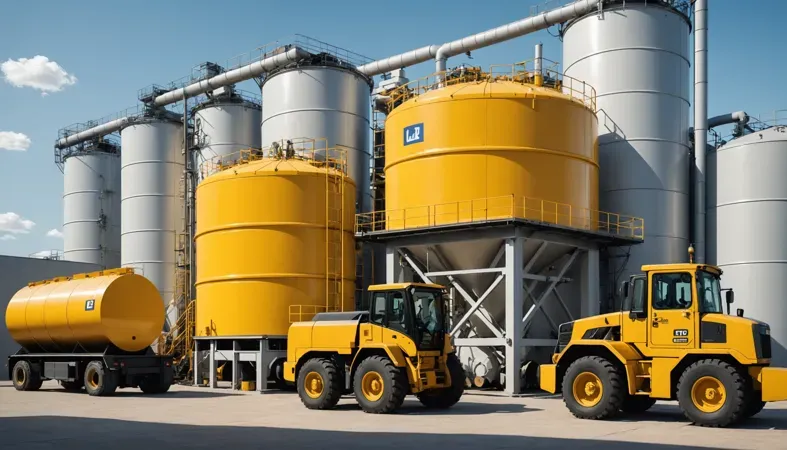
Other Options for Repairing a Gas Tank
When you’re facing a gas tank issue, welding isn’t your only route. Alternatives like epoxy sealants, such as J-B Weld, can provide quick fixes without the risks associated with welding. If you’re looking to prevent future leaks, consider using a gas tank repair kit that includes fiberglass fabric.
Let me share an insight I’ve gained over the years: sometimes, opting for a simpler approach can save you time and hassle. For minor leaks, products like Permatex fuel tank repair putty can work wonders. In certain cases, these methods may be easier and safer than tackling a full weld job.
Frequently Asked Questions (FAQs)
Now let us look at some common questions I typically get asked.
Can Gas Tanks Be Welded?
Yes, gas tanks can be welded. However, you must take proper precautions, as they’re hazardous. Tanks contain flammable vapors, and any spark can lead to explosions. Always ensure the tank is empty and thoroughly cleaned before attempting any welding.
How Do You Prep a Fuel Tank for Welding?
To prep a fuel tank for welding, first empty it completely. Then, clean the interior and exterior thoroughly to remove any residues. After that, you should purge the tank with an inert gas like argon to prevent igniting any remnants. This minimizes risks during welding.
How to Repair a Leaking Fuel Tank?
To repair a leaking fuel tank, locate the leak and clean the area around it. You can use a patch method with specialized tank repair adhesives or weld if it’s safe. Remember, ensure the area is devoid of flammable vapors for a successful and safe repair.
Can You Weld a Motorcycle Gas Tank?
Yes, you can weld a motorcycle gas tank. Ensure it’s empty and properly cleaned first. Metal composition matters; different tanks require different welding rods. Steel tanks generally need mild steel filler rods, while aluminum requires specific aluminum rods.
How to Weld a Gas Tank Leak?
To weld a gas tank leak, follow these steps: Pre-clean the area, purge with inert gas, and patch the leak with suitable filler. Make sure you maintain a low heat input to avoid warping the thin metal. This helps in achieving a strong, leak-proof seam. Understanding techniques to weld thin metal effectively is crucial for successful repairs.
What to Do With Old Welding Tanks?
For old welding tanks, check local regulations for disposal or recycling. Many service centers accept used cylinders for reclamation. Do not throw them out; you’ll risk serious accidents if pressurized tanks are handled carelessly.
Conclusion
We covered essentials like what a gas tank is, types and weldability, prerequisites for welding, the steps to follow, safety tips, different welding methods, and common issues that might crop up. We also discussed inspection, aftercare, and the key benefits of properly welding a gas tank. Plus, we touched on real-world uses for welded tanks and other repair options.
I trust these insights have been helpful as you consider how to weld a gas tank. Remember, it’s about prepping the tank correctly, using appropriate methods like TIG or MIG, and ensuring safety throughout. By focusing on these steps, you can successfully repair a gas tank, ensuring a safe and efficient outcome.
For a deeper understanding of welding techniques, tips, and best practices, check out What is Welding.
References
Joe Carter is a retired welding professional with over 40 years of hands-on experience in the industry, spanning ship repair, structural welding, and even underwater projects. Joe is a master of MIG, TIG, and Stick welding. Passionate about mentoring the next generation of welders, Joe now shares his decades of expertise and practical insights to help others build rewarding careers in welding.
Gas Tank Repair, MIG Welding, Personal Protective Equipment, Safety Tips, TIG Welding, Welding, Welding Safety, Welding Techniques


